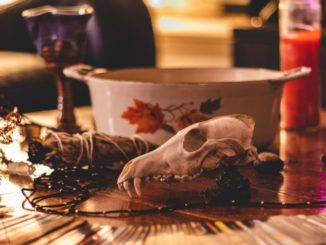
When the slaves were brought to Cuba they also brought their religious beliefs with them. There were 4 major Groups of Africans that were brought as slaves to Cuba. The Bantu people from the Congo Basin were the largest population of the slaves imported to Cuba. There was approximately 400,000 Bantu people brought to Cuba as slaves. The next group was from Nigeria. They were the Yoruba people from Southwestern Nigeria. An estimated 275,000 slaves were imported to Cuba from Nigeria from 1820 to 1860, which corresponded to the fall of the Oyo Empire. The next were the Carabali also known as Abakua people who were basically Igbo and Ijaw people from Southeastern Nigeria. They arrived in Cuba in the late 1700's to early 1800's at a population of 240,000. The last of the main groups to come to Cuba as slaves from Africa were the Arara people. They were of Fon, Ewe, Popo and Makhi origin. They came from Dahomey and its surrounding areas in a population of 200,000. There were other groups from Africa as well but in small amounts compared to these 4 groups.
The Bantu Afro-Cuban religion was called "palo" or sticks by the Spaniards. This is because the Spaniards noticed that the Bantu were always gathering Sticks and Barks for their purposes. "Santeria" which is actually a derogatory term, is a term that was used by the Spaniards to depict any one that they believed put saints before god.
Contrary to Christian and European comprehension of African religious beliefs, the Afro-Cuban religions in their various forms all have a supreme "god" like the Christians and Europeans understand god to be. For the Bantu god is called Nsambi and to the Yoruba / Lucumi people god is called Olodumare. Like Christians who have saints that are god's emissaries, all of the Afro-Cuban religions have deities that are god's emissaries. The difference is that Afro Cuban religions believe in the forces of nature and that the deities control nature as well as peoples lives. They also incorporate the concept of ancestors and their purpose of spiritual existence is with the living as part of their religious belief systems as well.
In Cuba during slavery, the free people of color created cabildos or houses to preserve their cultural and religious practices. So one would find for example a Lucumi / Yoruba cabildo, A Myombe Bantu Cabildo, An Arara Cabildo etc. The fact that many of the slaves were forced to practice Christianity enabled them to camouflage their religious practices under the guise of Christianity. This is where the misnomer of "Santeria" came into being; it was a blanket term for the Afro-Cuban Religions particularly of Lucumi origin. After slavery the whites still discouraged the practice of the African religions but the Cabildos kept the Afro Cuban religions in tact. Despite all the attempts to under mind the African religions in Cuba, Afro-Cuban religions survived until this day.
Proudly WWW.PONIREVO.COM
Source by Regina Schwartz



